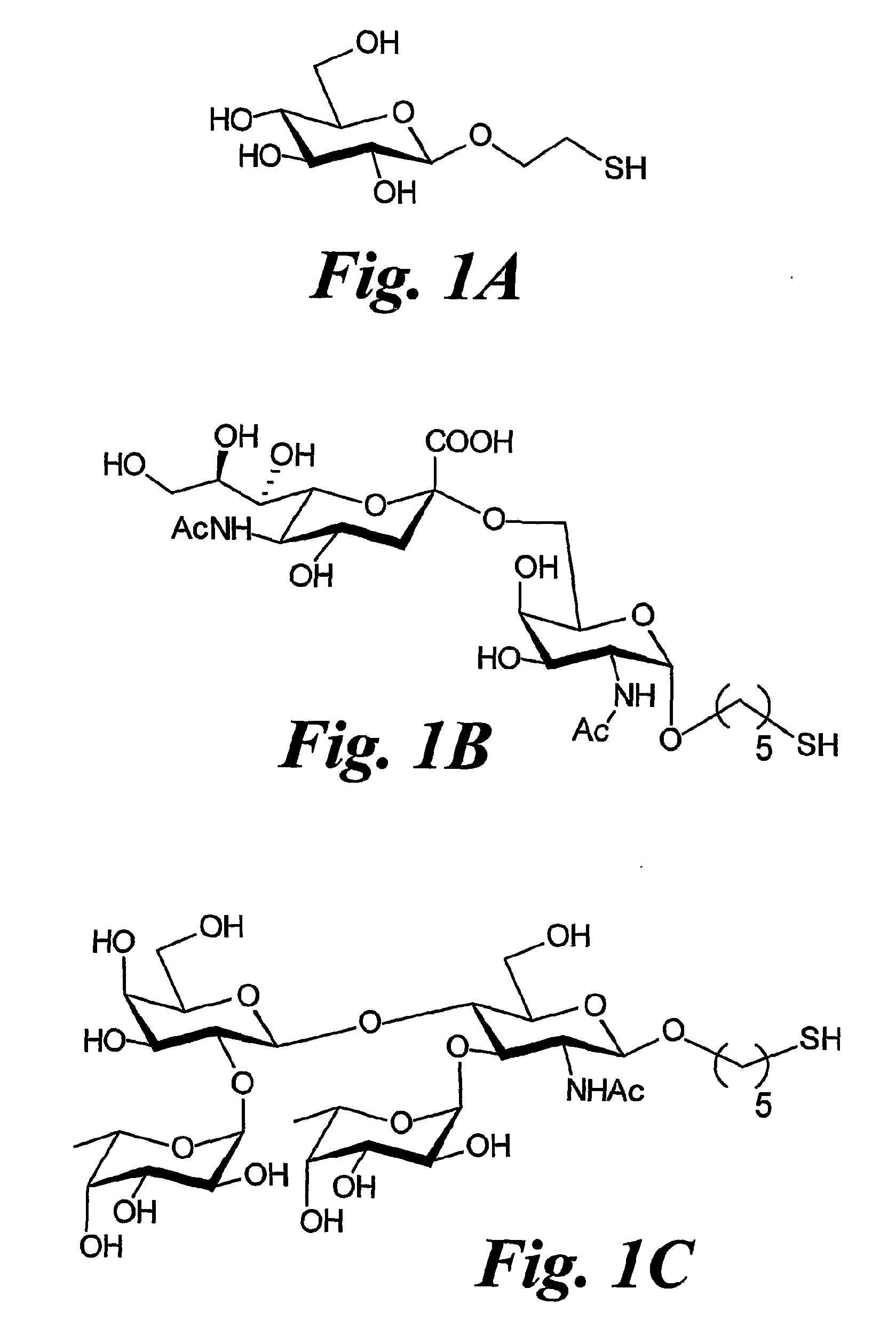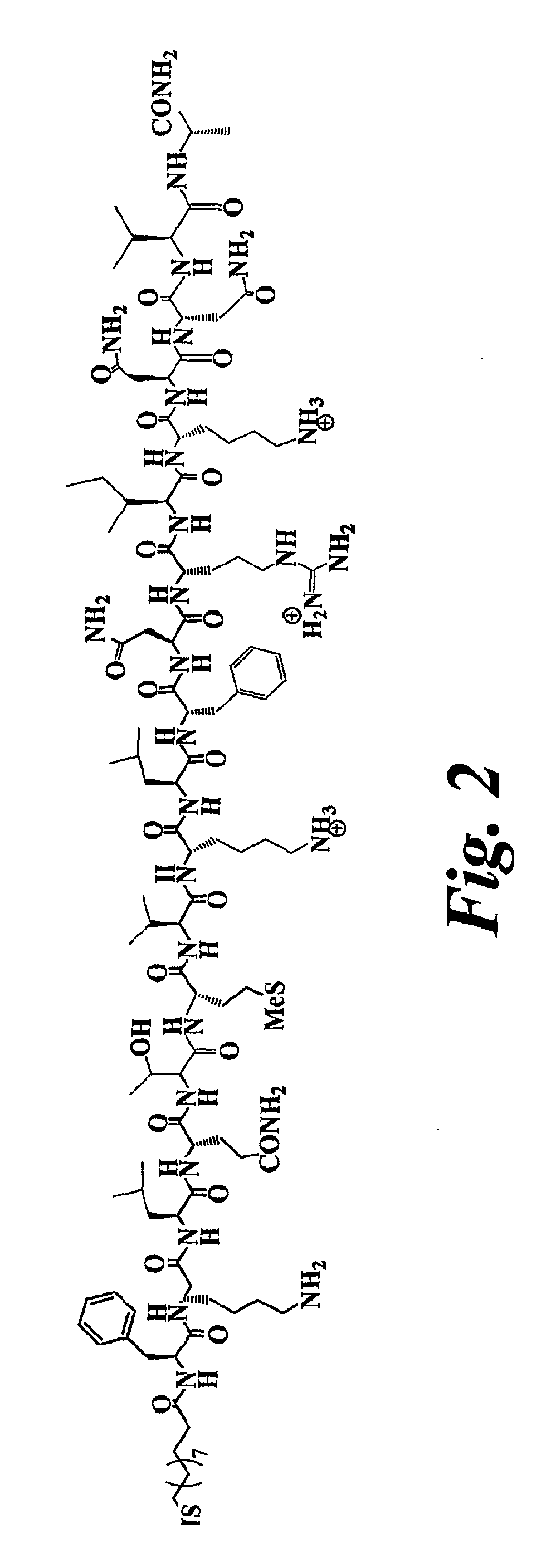Nanoparticles Comprising Antigens and Adjuvants, and Immunogenic Structures
a technology of nanoparticles and adjuvants, applied in the field of nanoparticles, can solve the problems of large hampered use of carbohydrate and peptide antigens in vaccines, too toxic or experimental to be used in humans, and achieve the effects of preventing or reducing the binding of growth factors to receptors, avoiding unspecific interactions and side effects, and preventing or reducing the mitogenic stimulation of cancer cells
- Summary
- Abstract
- Description
- Claims
- Application Information
AI Technical Summary
Benefits of technology
Problems solved by technology
Method used
Image
Examples
example 1
[0124]The preparation and characterization of nanoparticles loaded with carbohydrate antigens, a T-helper carrier and glucose attached to the gold surface is described below.
[0125]The ligands Glc, STn, and Ley (FIG. 1) were used. A C2 aliphatic spacer was chosen to attach the glucose residue to the gold surface while a C5 aliphatic linker was used for the attachment of both antigens.
[0126]The T-helper peptide ligand BC11 (FIG. 2) was prepared by linking a promiscuous T-cell peptide epitope (FKLQTMVKLFNRIKNNVA) from tetanus toxoid through the amino terminal group to a C11 aliphatic spacer. The T-helper peptide ligand BMIX (FIG. 3) was prepared by linking the same tetanus toxoid T-cell peptide epitope through the amino terminal group to a mixed linker composed of hexaethylene glycol and a C11 aliphatic spacer.
[0127]For the preparation of the glyconanoparticles, Glc, STn, Ley and BC11 or BMIX were dissolved in deuterated methanol in the desired proportions and the 1H NMR spectra of the...
example 2
Gold Nanoparticles as Immunogenic Structures
[0154]Formulations of gold nanoparticles are made according to the techniques as described in WO 02 / 32404. Different constructs of gold nanoparticles with a ratio of alpha-Sialyl-Tn:Lewis y=30:3 and 3:30 will be prepared with various densities of the peptide sequence FKLQTMVKLFNRIKNNVA. The rest space can be blocked using Glc-C2. Alternatively, the linker can also be of the sequence FKFQILYNSIMG.
[0155]The ratio of either Sialyl-Tn or Lewis y or a combination of both linkers can also be increased using the technique according to WO 02 / 32404. For example, up to several hundreds of carbohydrate groups can easily be linked to the core molecule. The ratios of different ligands can be easily-varied. Alternatively, there can also be one single Sialyl Tn or Lewis y carbohydrate covalently bound to the core molecule.
Antibodies as Immunogenic Structures
[0156]Coupling of a SialylTn carbohydrate to HE2 SialylTn-O(CH2)3NH(CH2)4COO-pNp was coupled to HE...
PUM
| Property | Measurement | Unit |
|---|---|---|
| mean diameter | aaaaa | aaaaa |
| mean diameter | aaaaa | aaaaa |
| mean diameter | aaaaa | aaaaa |
Abstract
Description
Claims
Application Information
 Login to View More
Login to View More - R&D
- Intellectual Property
- Life Sciences
- Materials
- Tech Scout
- Unparalleled Data Quality
- Higher Quality Content
- 60% Fewer Hallucinations
Browse by: Latest US Patents, China's latest patents, Technical Efficacy Thesaurus, Application Domain, Technology Topic, Popular Technical Reports.
© 2025 PatSnap. All rights reserved.Legal|Privacy policy|Modern Slavery Act Transparency Statement|Sitemap|About US| Contact US: help@patsnap.com



